Get PeakVisor App
Sign In
Search by GPS coordinates
- Latitude
- ° ' ''
- Longitude
- ° ' ''
- Units of Length

Yes
Cancel
Share ×

Scan the QR code and open PeakVisor on your phone
❤ Wishlist ×
Choose
Delete
Chiayi County (嘉義縣) is nature's splendor, the land of plenty, from peaks, plains, and palm-fringed beaches. The southern Taiwan region holds a total of 204 named mountains, the highest and most prominent being Yushan Main Peak (玉山主峰). Also known as Taiwan’s tallest mountain, Yushan Main Peak measures 3,952 meters (12,966 ft).

Sandwiched between Yunlin County (雲林縣) in the north and southern Tainan County (臺南市), Chiayi County covers 1,902 km² (734 mi²). Landlocked in the provincial region is Chiayi City (嘉義市), independent of Chiayi County.
Yushan Main Peak stands in Chiayi County's far east, where Taiwan's precipitous peaks congregate. To the west is the Taiwan Strait, while north and south are luscious leafy groves of Taiwan's backcountry.
As Chiayi's eastern zone is mountainous, most other high peaks center around Yushan Main Peak. Other prominent hills are Yushan West Peak (玉山西峰), Yushan Front Peak (玉山前峰), Zhenlulinshan (真鹿林山), and Lulinqianshan (鹿林前山).
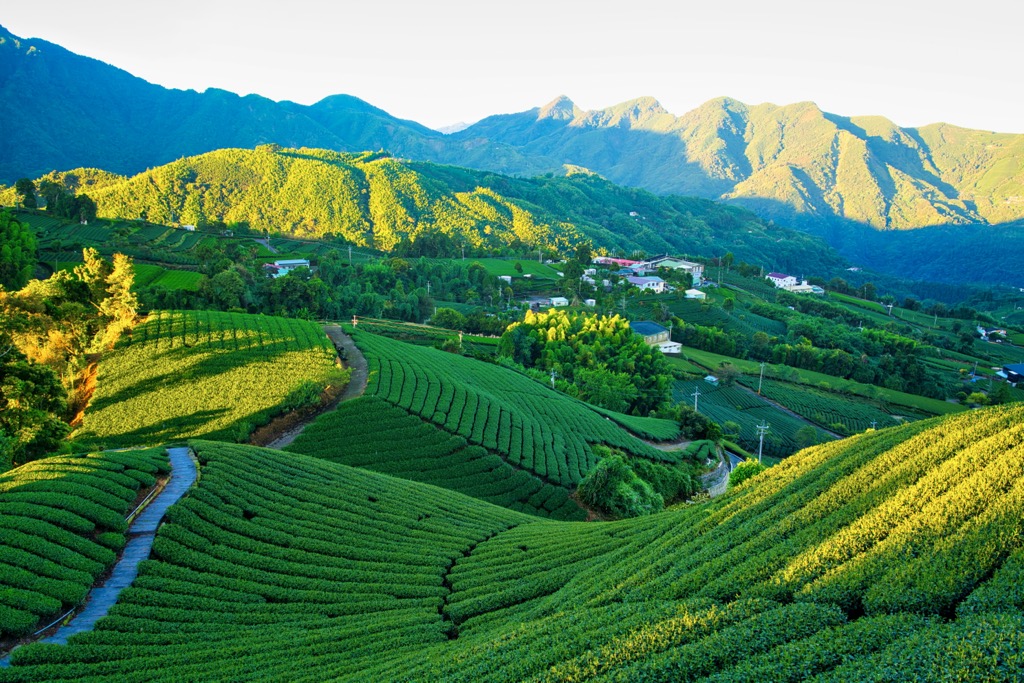
Known for its flourishing fertile forests, Chiayi is Taiwan's only county with three national scenic areas. These are Alishan National Scenic Area (阿里山國家風景區), Southwest Coast National Scenic Area (南濱海國家風景區), and Siraya National Scenic Area (西拉雅國家風景區). Thus, exploring Chiayi's emerald land is a hiker's dream.
As southern Taiwan enjoys a humid subtropical climate, Chiayi remains warm year-round. Mild winter days average 72°F (22°C), while summer reaches highs of 91°F (33°C). Thus, the weather stays constantly mild, without being too cold or too hot. However, in mountainous zones, temperatures can drop drastically.
While renowned for its emerald landscape, Chiayi County features many other natural and manmade gems. The Southern Branch of the National Palace Museum is in Chiayi's west, featuring many historical relics and cultural artifacts.
In the north, Face your fear of heights on the Taiping Suspension Bridge (太平雲梯). Near eastern Chiayi's Alishan National Scenic Area is Fenqihu (奮起湖), a hillside stop on the historic Alishan Railway. In the south is the thriving Danaiku Nature Ecological Park (達娜伊谷自然生態公園).
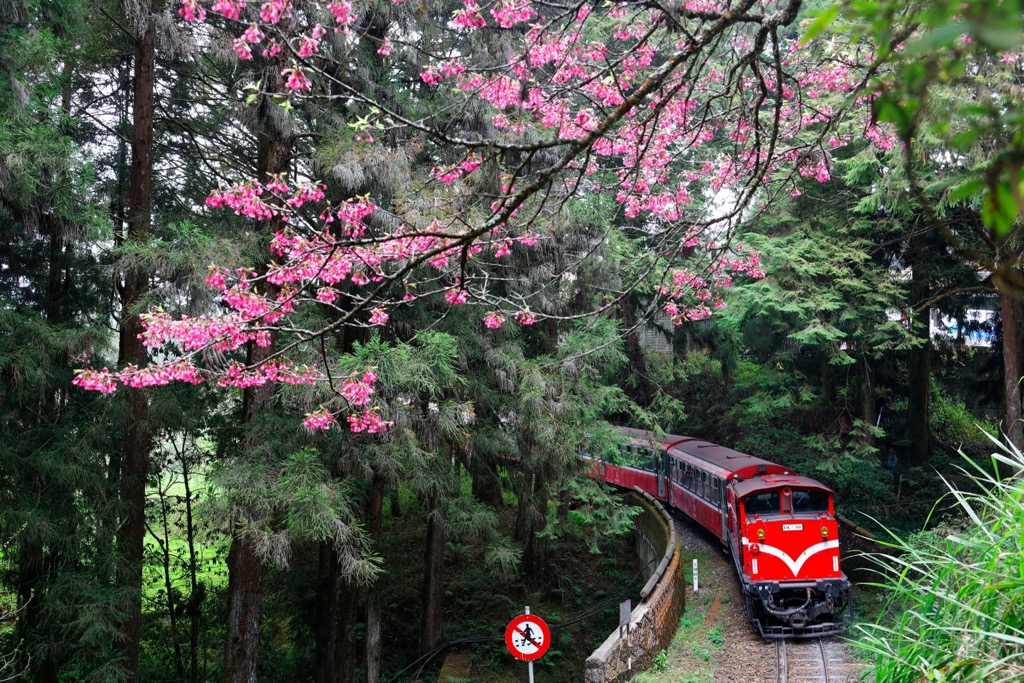
Taiwan's geological history is a story of its existence. Shifting in the Eurasian and Philippine Sea plates caused a massive upheaval of land through the Earth's crust. The Earth's pressure forced rock to rise sharply through this narrow fracture, creating a hilly spine along Taiwan's core.
Five mountain ranges span Taiwan. These are, from ascending order, the Yushan Range (玉山山脈), Central Mountain Range (中央山脈), Xueshan Range (雪山山脈), Alishan Range (阿里山山脈), and the Hai'an Range (海岸山脈).
Two mountain ranges circulate through Chiayi's hilly kingdom. In Chiayi's easternmost corner is the giant Yushan Range. Composed of unmetamorphosed rock from the Miocene epoch, the terrain is sharp and jagged, with cliffs on either side.
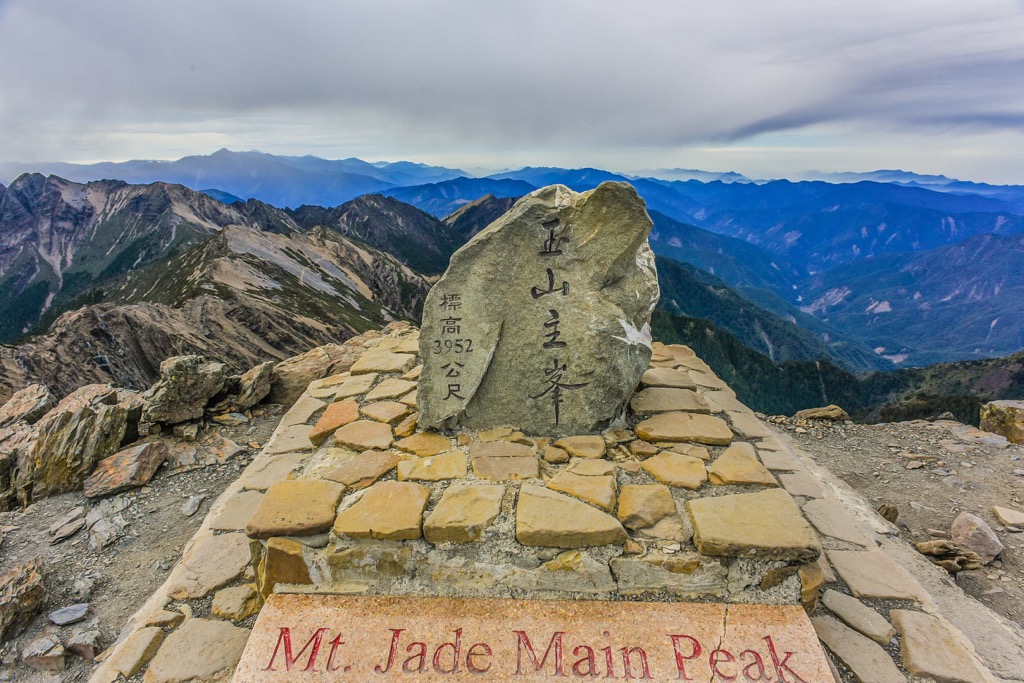
In contrast, the Alishan Range is far less intense than Yushan's great, rocky pinnacles. Data Shan, the highest peak at 2,000 meters (6,562 ft), is nearly half Yushan's height. Alishan's rock bed comprises sandstone, shale, and conglomerate stone from the Miocene to Pleistocene epoch.
Chiayi County nurtures abundant and varied plant growth in the region, from sea to forests. Chiayi’s seashore belongs to the Southwest Coast National Scenic Area, which feeds into Taijiang National Park. Aquatic plants such as wooly grass, seahorse vine, and crystal water hyssop thrive in the wetlands. A stunning mangrove forest traces the shores of Chiayi.
A luscious broadleaf forest covers Chiayi’s lower vegetation zones from coast to inland. Flourishing groves of acacia, betel nut, jelly fig, and Moso bamboo grow in these areas. Higher up in Alishan’s hills, vast amounts of Japanese cedar, Taiwan red cypress, Taiwan yellow cypress, and Taiwania grow.
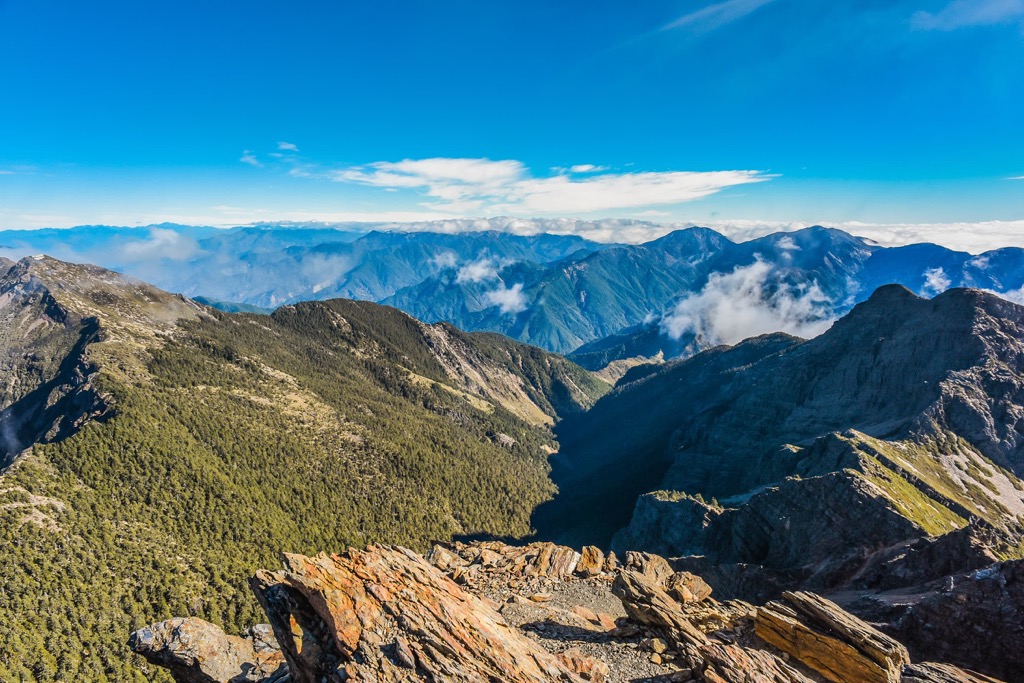
Cold temperate conifer trees thrive on Yushan’s frosty elevation. Yushan juniper, Taiwan hemlock, and Taiwan fir signal the coldest surviving trees in Chiayi’s hills. On Yushan’s summit, herbaceous plants such as Taiwan sassafras and edelweiss withstand the blistering cold.
The earliest inhabitants of Chiayi County were the Hoanya tribe. While their language is now extinct, their descendants branched into the Lloa and Arikun people. With the onset of Chinese Han immigration, Chiayi County’s land soon became a mix of indigenous people and Han settlers.
Chiayi is most known for its historic Alishan Forest Railway. What spurred its construction was the thriving cypress forest in Alishan’s hills. During the Japanese Occupation Era, Japanese officials found the flourishing forest and decided to set up a logging base there. But they had to transport the heavy felled trees from the mountains to Chiayi City for shipment.
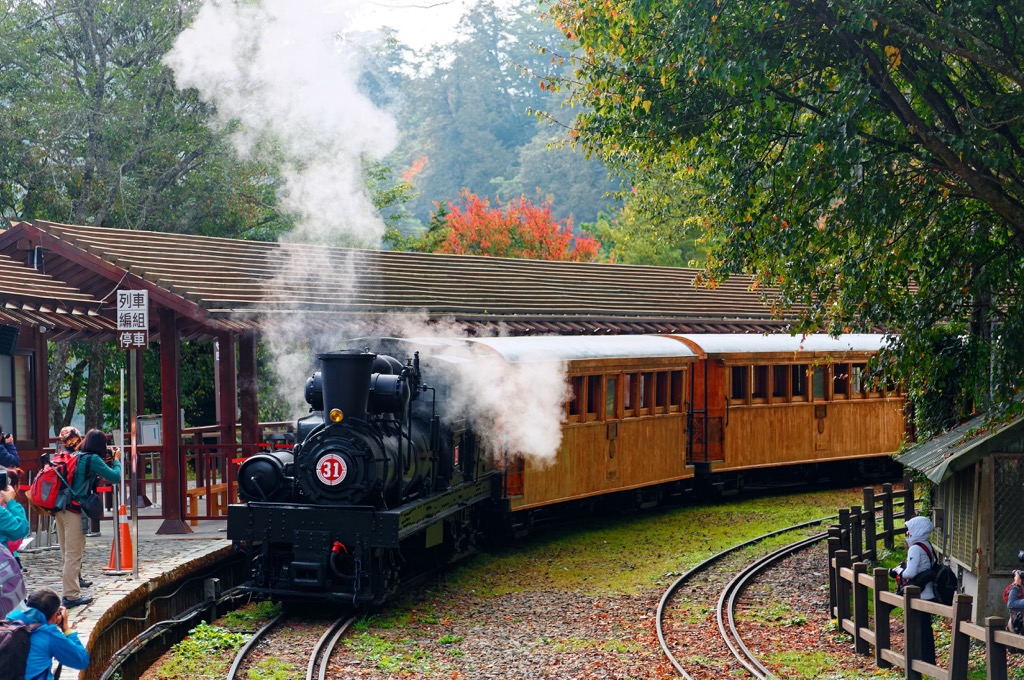
Thus, the Alishan Forest Railway was a method of transport, spanning 86 km (53 mi) from Chiayi’s port to Alishan’s hilly logging base. It opened in 1912 and stops at hillside villages and coastal towns along the way to Chiayi City. After the Japanese fled Taiwan, the government outlawed logging to preserve the forest’s natural resources.
However, the Alishan Forest Railway is still used for tourism. It is a popular way for visitors to journey up the rolling hillside to reach Alishan’s magical woodlands.
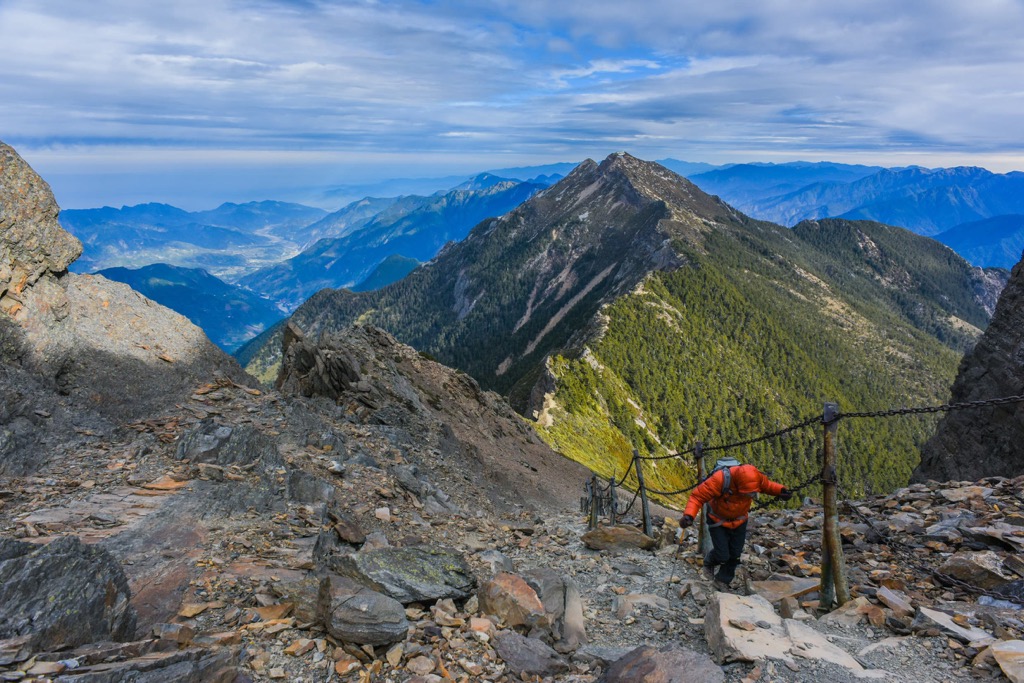
Chiayi’s major hiking trails and areas are:
Alishan National Forest (阿里山國家森林遊樂區) is a magical world of misty woodlands, one of Taiwan's top scenic spots for its mesmerizing scenery. Admire the floating sea of clouds resting on hilly peaks from Alishan's observation points, a wondrous sight to witness.
For the whole Alishan experience, take the historic steam engine, Alishan Forest Railway, to the hilly emerald grove. Be enchanted as you enter opaque forests where the sunlight dims from the dense forest canopy.
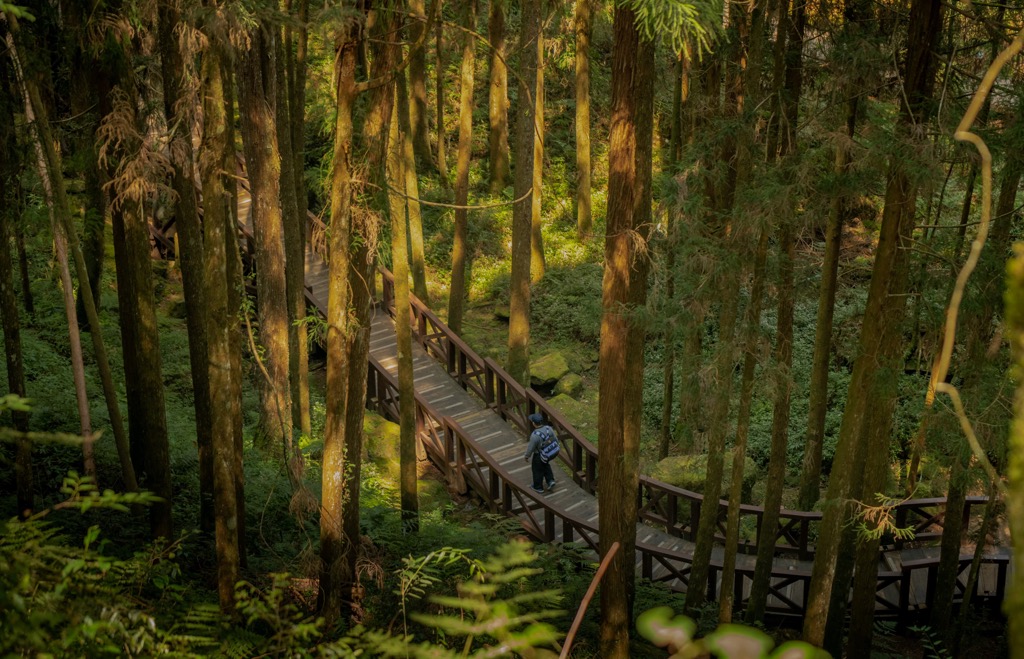
Once in Alishan National Forest, explore the bountiful area of nature's beauty. For peak climbing, head to the Ta Shan Mountain Trail. After a 7.5 km (4.6 mi) moderate hike to Ta Shan's (塔山) summit, you can gaze at Yushan's lofty pinnacle and its extending peaks.
To feel lost in nature, visit the Shuishan Trail. Enter a world of greenery from the velvety mossy carpet, feathery ferns, and a fragrant forest of Japanese cedar and Taiwan red cypress. The route runs parallel to disused train tracks, with plant life growing on the manufactured railway.
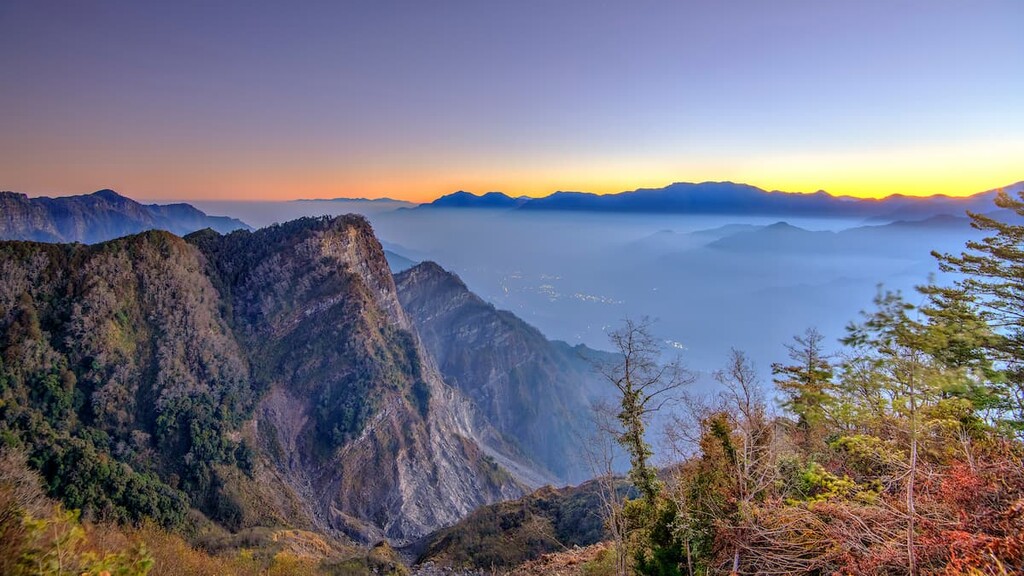
Be awed by nature when you visit the Giant Tree Trail. A total of 41 ancient Taiwan red cypress trees surround the two-part path. As the trees are so old, they have grown to towering heights. The tallest arboreal is Alishan's Sacred Tree at 45 meters (148 ft) with a circumference of 123 meters (404 ft). It is also one of the oldest at 2,300 years old.
Finally, you're lucky if you visit Alishan in late winter or early spring. It's one of Taiwan's top scenic places to view cherry blossoms. Over 1,000 sakura trees bloom the soft pink flowers, creating a fanatic tourist attraction as the sight is fairy-tale magic. Against the setting of Alishan's mountain mist, prepare to be amazed.
Dare to climb Taiwan's highest mountain? Cross Yushan off your bucket list and win bragging rights of ascending Taiwan's greatest peak.
Start early in the morning to see sunrise spread across the panorama. However, if you don't mind missing a spectacular sunrise, don't leave climbing until too late in the day, as descending Yushan's rocky cliff is dangerous in the dark.
Starting from Tataka Saddle Trailhead, begin your Yushan expedition by hiking uphill along a moderately steep path. You will reach Paiyun Lodge, Taiwan's highest residence, at 3,402 meters (11,161 ft) after an 8.5 km (5.3 mi) climb. You'll notice the environment change from broadleaf foliage to conifer needles on your way up. Yushan juniper, Taiwan fir, and Taiwan hemlock thrive in Yushan's alpine woodlands.
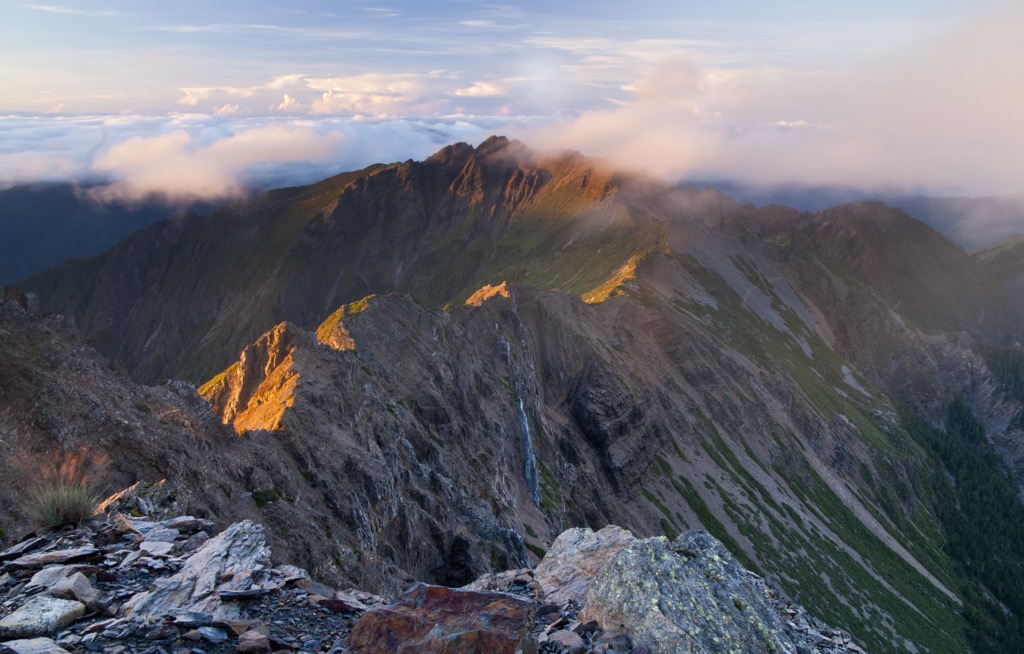
If you have started later in the day, it's best to rest overnight at Paiyun Lodge. However, you should book sleeping arrangements before arrival. Onwards from Paiyun Lodge is where the track becomes challenging, sheer, and nerve-wracking. Due to the high elevation, you tire more easily and can feel light-headed, so practise extreme caution when climbing Yushan.
Only 2.4 km (1.5 mi) separates Paiyun Lodge from Yushan's summit. Due to the vertical gradient and 500 meters (1,640 ft) elevation gain, the trek is intense and laborious. As the mountain ledges are scarily narrow in parts, if you're climbing with a team or stuck behind a team, you'll have to wait for your turn to scramble across the narrow path in blistering cold gale force winds. Use the mountain's steel cables to ensure your safety on the cliff.
At last, you'll reach the most remarkable point in Taiwan, Yushan's summit. From here, glorify the splendid views from 3,952 meters (12,966 ft) above, punctuated with sharp pinnacles, jagged terrain, and deceivingly floaty, fluffy clouds. Yushan's five other peaks encircle the colossal mountain.
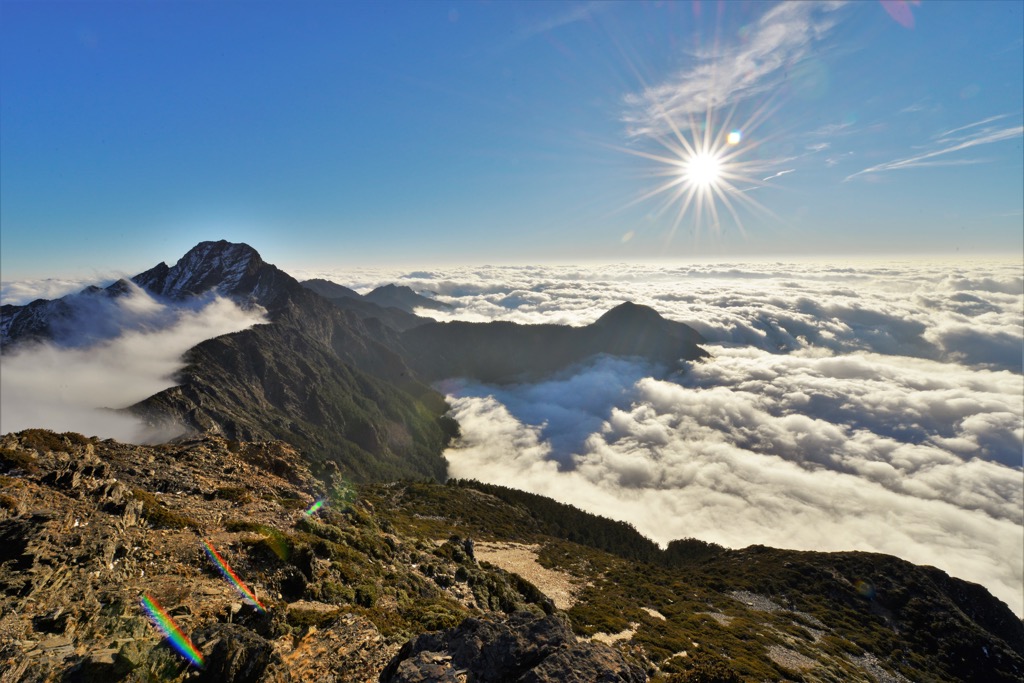
Situated in Chiayi County’s eastern mountainous region is the hilly hiking path of Eryanping Trail. The views of this route are incredibly picturesque, overlooking tea plantations and bamboo forests with excellent outlooks on Chiayi’s prominent peaks.
While the path is only 1km (0.6 mi) long, its 1,248 to 1,454-meter (4,094 to 4,770 ft) elevation boasts sublime views. Visitors can access this path next to the 52.8K on Highway 18. Venture on the wooden boardwalk route to witness Chiayi’s craggy hills cloaked in a blanket of a soft cloud,
From the trail’s highest point, you can see Yushan in the east, the Zengwen Reservoir (曾文水庫) to the south, Alishan’s hilly forest in the northeast, and Budai Port on Chiayi’s coast to the west. If you have binoculars, you can see Kaohsiung’s 85 Sky Tower in the south.
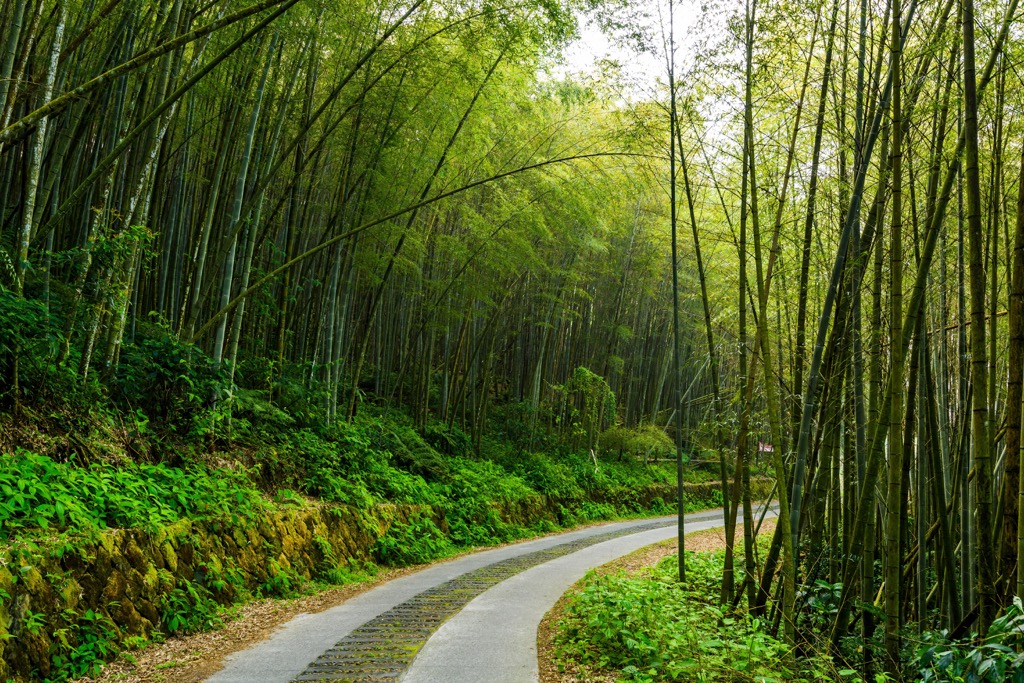
If you've awoken to energy and a 14km (9 mi) trek through Chiayi's highlands doesn't scare you, then make a beeline for Yun-Chia Five Peak Trail. You'll be snapping away at the incredible scenery of leafy-lined tea plantation hedges, trailing the hill's flowing momentum.
Starting on Chiayi and Yunlin County's border, you'll first head to Dajian Shan (大尖山), the first of five hills. Inhale the earthy smell of betel nuts and coffee plants as you gradually ascend the mountain. Palm trees linger near the lower elevation, a sight you won't see until you've ended the trail.
You'll notice when you're high up on the mountain, as the sea of clouds will fall below you, perching on the tufted hills. From Dajian's summit, it seems as though you're lost at sea, with pockets of land poking above the foamy waters. Yet, there is no foam, just a fluffy cloud cover mimicking frothy water.
Journey to Erjian Shan (二尖山) involves penetrating a dense bamboo tunnel, with a circle of light shining through the dark passage. You'll cross mountainous tea fields and brush past coniferous needles.
The views from the top may be misty, but you can view Yun-Chia Five Trail peaks lining up. Dajian Shan is behind you, while Maan Shan (馬鞍山), Lizijiaoshan (梨子腳山) and Taiping Shan (太平山) await your presence.
The trek to Maan Shan is magnificent. You will walk through aromatic tea plantations and feel lost in a maze of hedged rows. As you gain elevation, you can see the geometric lines of leafy brews below, a patchwork of green. The textured greenery is a sight to behold and reason enough to partake in this stunning trek.
Lizijiaoshan's environment looks similar but with a collection of broadleaf foliage as the elevation is lower. The mix of forest and tea fields is a stunning view to behold. You will also begin to catch the first glimpse of Taiping village.
You'll descend from Lizijaoshan to Taipingshan, where you can view the iconic Taiping Suspension Bridge, the highest scenic bridge in Taiwan. It affords views of the Jianan Plain and the Taiwan Strait at its elevation of roughly 1,000 meters (3,281 ft).
A century-old path used to transport agricultural goods between the Tsou tribe and Han settlers, Ruitai Historic Trail (瑞太古道) is a fascinating forest track. Trailing through a thick Moso bamboo grove, the 5km (3 mi) journey is continually shaded with long linear stems of jade and emerald.
Listen to nature’s sounds of the forest canopy’s rustling foliage. The long bamboo poles create a soft, brassy chime when a breeze passes. The ancient path has wooden slat steps leading up the gentle gradient. You can admire beautiful farmlands and bountiful forests from the viewing platform in the clearings.
The Ruitai Historic Trail is scenic year-round. Plum flowers grow in winter, and cherry blossoms bloom in spring. Fireflies descend on the hill from April to May, enchanting the scenery with their glowing orbs. In autumn, the changing crimson foliage is spectacular.
Chaiyi County is mostly remote land, as the closest urbanized center, Chiayi City, is not part of this region. Taibao City (太保市) is a great place to stay, one of Chiayi’s largest hubs. For breathtaking nature, drive up the mountains and stay in Alishan Township (阿里山鄉).
Alishan’s leafy, misty mountain retreat is nature’s gem. It may be chilly in the forested hills, but the stunning sights are bold enough to warm your heart and take your breath away. Alishan Township is a popular place in Taiwan, as tourists descend on this sleepy hilly hollow every spring for the romantic cherry blossoms. So, although remote, you’ll find accommodation to suit your budget.
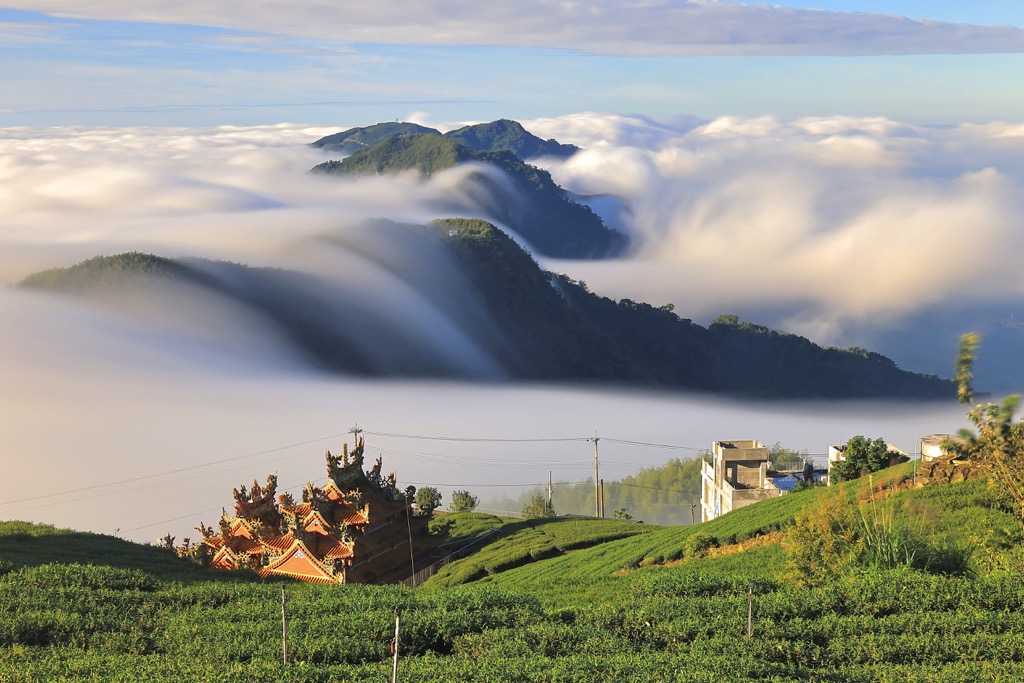
Alishan is famed for five scenic sights: cherry blossoms, the sea of clouds, the Forest Railway, divine trees, and its splendid twilight skies. One of Alishan’s beautiful sunrise spots is on Zhushan’s (祝山) Viewing Platform. Visitors can drive or hike their way there to witness daybreak erupt over the milky clouds and rolling hills. As it's such a well-known place, a 10 minute climb to Xiao Li Yuan Shan’s (小笠原山) observation deck, grants you pristine views to enjoy in peace.
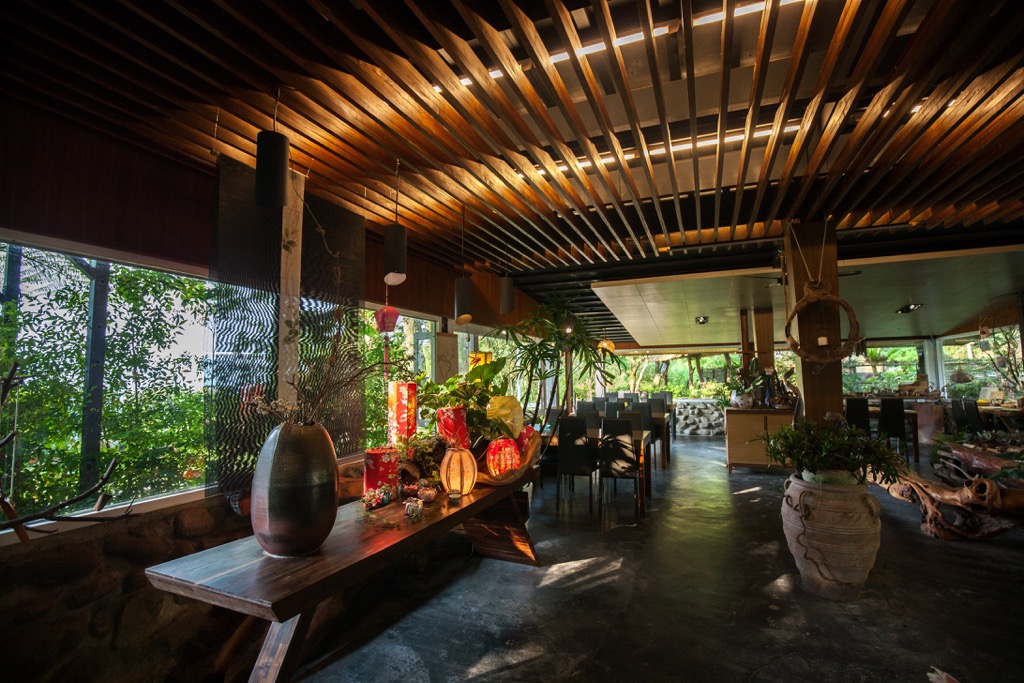
As light filters through the forest, head to the legendary Sister Ponds. Enjoy the exuberant forestry of golden Taiwan maple, fragrant Japanese cedar, and coniferous bursts of Taiwan fir along the way. The Sister Ponds story tells of two sisters who loved the same man. To release themselves from this unfortunate reality, they drowned themselves in the pond. Two identical wooden thatched pavilions edge the sorrowful lake. While tragic in tale, the scene is stunning in the hilly haze that lingers playfully above the water.
A visit to Alishan is not complete without tasting high mountain Alishan tea and mochi. Alishan tea plantations grow the purest Oolong tea in its hilly countryside. Alishan high mountain tea is considered a luxury tea as it’s grown in high elevations that produce a higher concentration of flavor from the hardy leaves. Mochi is another loved treat in Alishan, especially the tea flavored chewy rice cakes. A Japanese delicacy, mochi has remained an Alishan staple decades after the Japanese fled the forests.
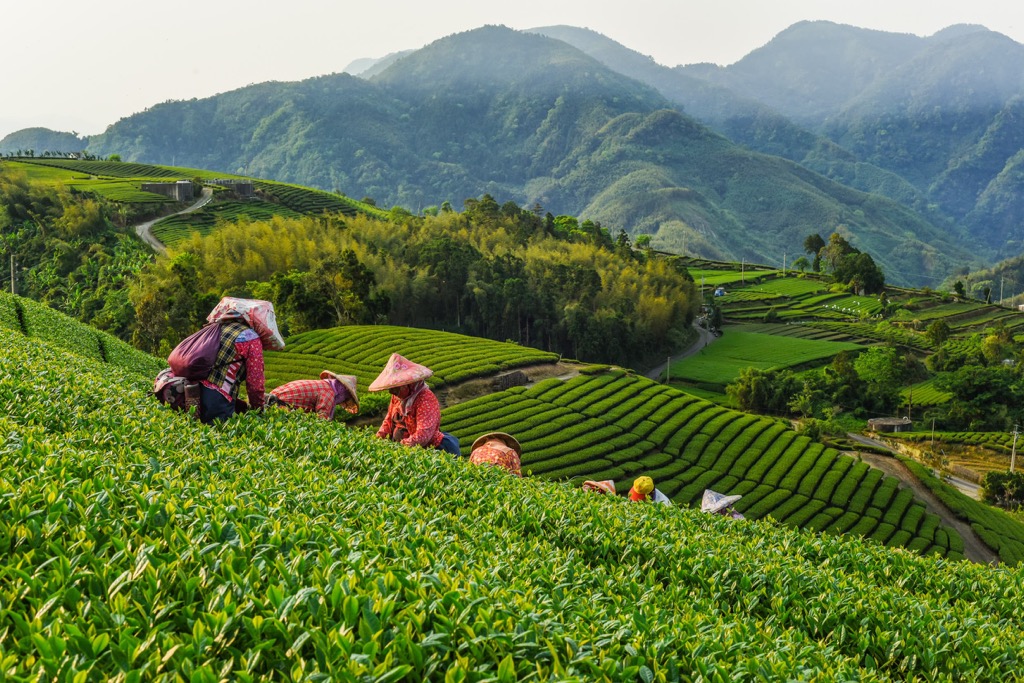
Chiayi County’s largest city, located in the west, Taibao City, is the heartbeat of this rural region. While not as populated or visited by Taiwan’s larger cities, Taibao City still retains its own character in its friendly, laid-back, and slow-living pace. A trip here will invoke a restful break from Taiwan’s bustling cities.
The Southern Branch of the National History Museum (國立故宮博物院南部院區) is Taibao City’s most notable attraction. A visit is fascinatingly educational to house ancient Asian artifacts and display informative exhibitions on Asian history, culture, and religion. You could spend a whole day in this beautifully constructed space, admiring the art and old relics and learning a crash course on Asian culture.
Outside the Southern Branch of the National History Museum is another pleasing piece of construction. Zhimei Bridge (至美橋) crosses the scenic Zhishan Lake, a moat-like pond nearly encircling the museum building. In 2018, Zhimei Bridge received a temporary projection makeover for Taiwan Lantern Festival. Locals installed screens on the bridge, and fluorescent images danced around the large monitor on Zhimei Bridge. A truly magnificent scene, Taibao City's residents loved the technological masterpiece.
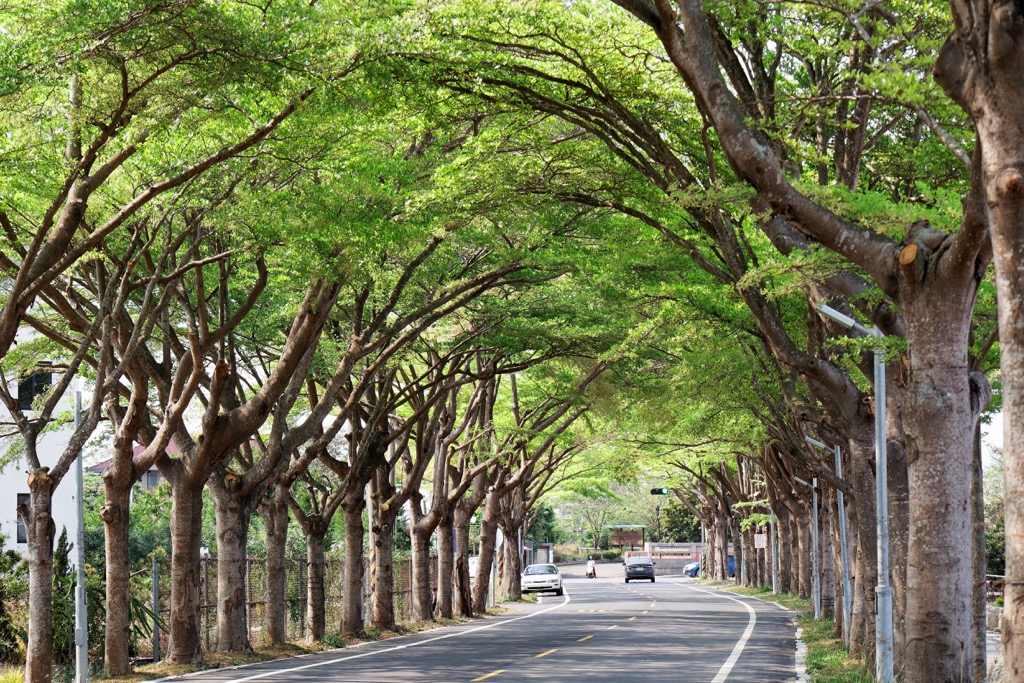
Finally, visit the Houtan Night Market (後潭夜市) in Taibao City’s east district. Known for its unbeatable prices and warm, friendly vendors, Houtan Night Market is a perfect way to spend your evening snacking on Taiwan’s finest street food. From squid soup noodles, stinky tofu, and oyster omelets, your senses will lead you to your next meal. You’ll also find other cuisines such as Vietnamese pho, Japanese takoyaki, and Indian curries.
From Taiwan’s major cities, take the Taiwan High-Speed Rail (HSR) or local express train (TRA) to Chiayi County. The High-Speed Rail stops at Chiayi Station in Taibao City. If you’re traveling on the local express train, stop at Chiayi City Station. You will then need to take a taxi to get into Chiayi County from this landlocked city.
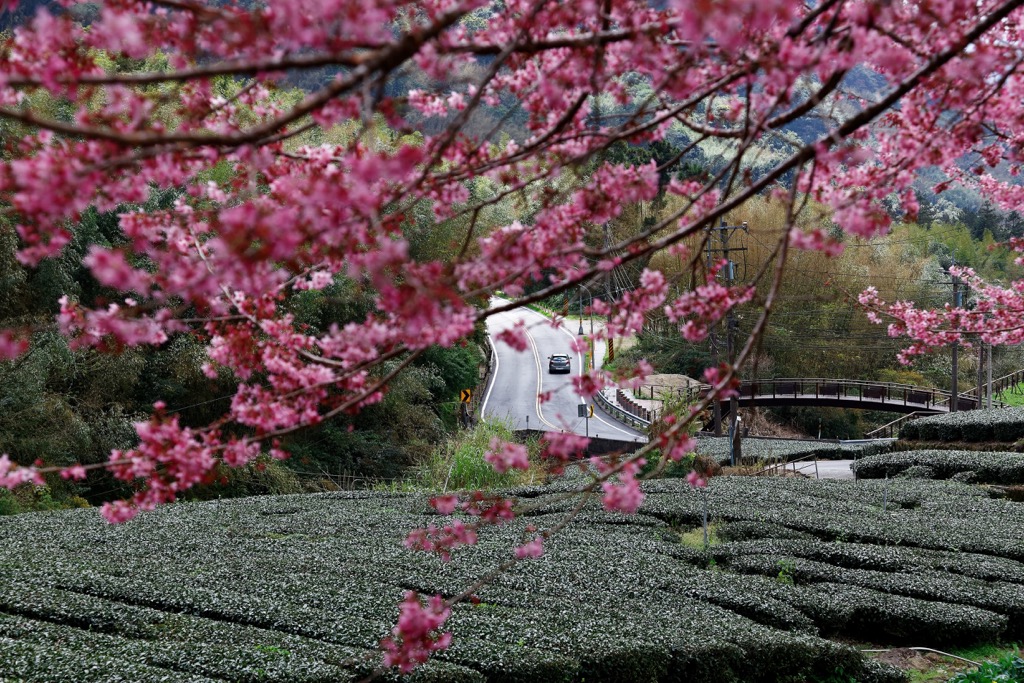
Explore Chiayi County with the PeakVisor 3D Map and identify its summits.








tw100
ultra
taiwan-high-three
taiwan-ultras
tw100
ultra
taiwan-high-three
taiwan-ultras
